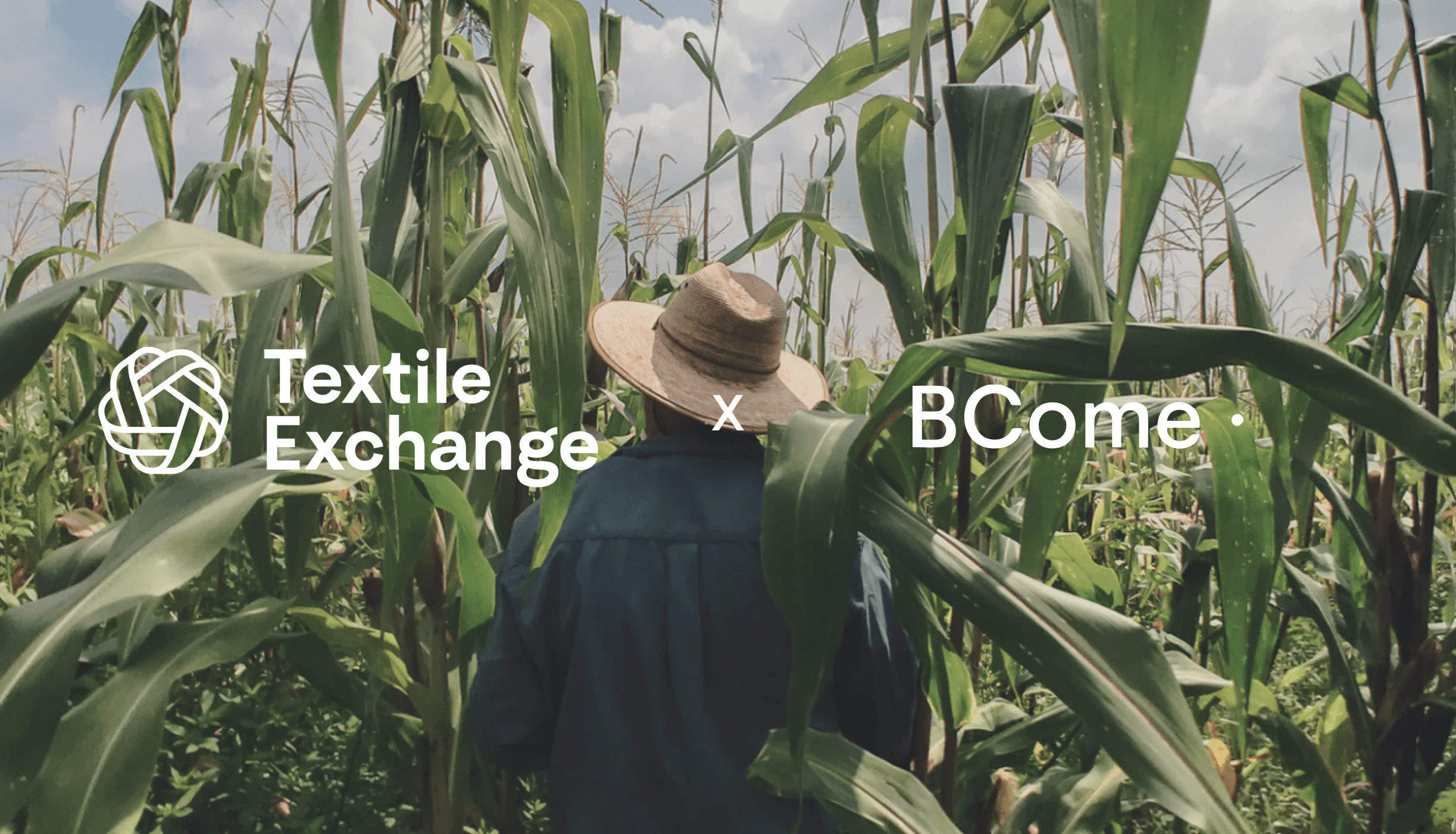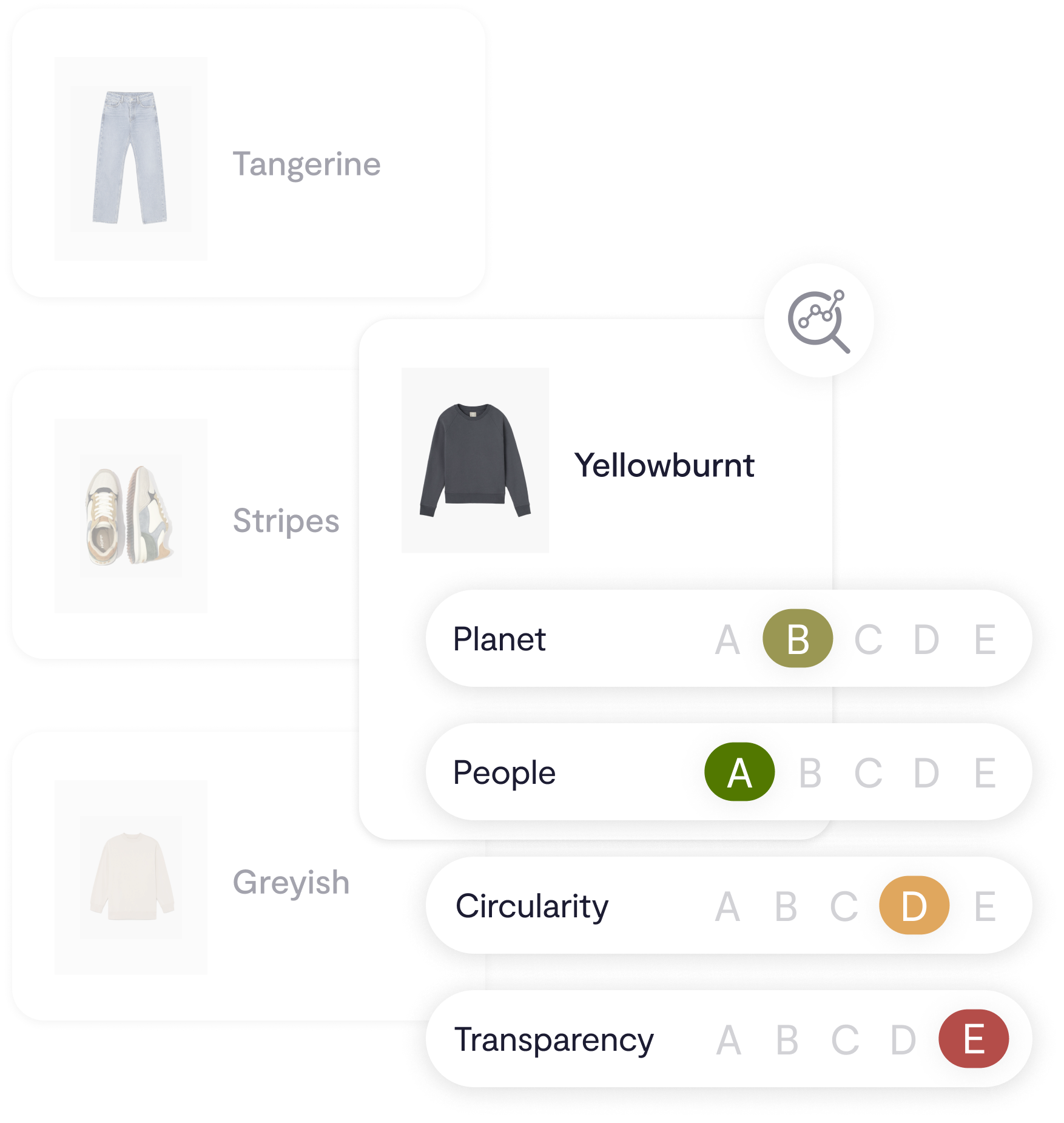As proud members of the Textile Exchange Community, BCome invites you to join an insightful conversation with Beth Jensen, Director of Climate+ Impact at Textile Exchange, the global non-profit organization focused on ensuring that the materials used in clothing production support our planet, its ecosystems, and its communities.
This interview offers a unique opportunity to delve deeper into the valuable insights shared during the latest Textile Exchange Conference, providing a glimpse into the innovative and sustainable future of the fashion industry.
What would you say is the most pressing issue for fashion professionals at the moment?
B. In relation to sustainability, one of the most important foundational issues we need to work to address as an industry is the fact that value creation for companies in the sector currently is overwhelmingly tied to extraction of new resources to make new products. How can the industry at large truly start to decouple value creation from resource extraction? Many sustainability concepts are connected here: circularity, durability, addressing overproduction and overconsumption. We will need to make real, meaningful progress in this area if we are to have any chance of meeting our climate and nature targets.
Looking ahead to meet upcoming regulations and decarbonization commitments by 2030, what steps do you believe the fashion industry should take to increase the supply of lower impact raw materials?
B. Impact reduction throughout the supply chain is dependent on trust and relationships between brands and their farm and factory partners. One of the most foundational steps brands can take is to get to know where their fibers and raw materials are coming from and where they are being manufactured into materials and products, and to develop relationships with those supplier partners, rather than constantly chasing the lowest cost materials and production partners. Building these relationships, which ideally would include long-term contracts, helps de-risk investments in lower-impact practices by farmers and manufacturers.
One of the most foundational steps brands can take is to get to know where their fibers and raw materials are coming from and where they are being manufactured into materials and products, and to develop relationships with those supplier partners, rather than constantly chasing the lowest cost materials and production partners
Beth Jensen, Director of Climate+ Impact at Textile Exchange
From your perspective, what fundamental changes or collective investments should the industry prioritize to foster a more sustainable production ecosystem?
B. The Fashion Climate Fund is a great example of the type of collective funding model that is needed in the industry in order to invest in the big systems changes that are needed to really drive change in such a fragmented industry – things like shifting to regenerative and organic production systems at scale, and building the infrastructure and technology to enable a truly circular global fashion and apparel industry. However, funding from individual companies in the industry – even if they are fortunate enough to have relatively significant sustainability budgets or investment arms – will never be enough to achieve these big shifts. We also need to explore other, more sophisticated financing mechanisms outside of corporate budgets.
Funding from individual companies in the industry will never be enough to achieve these big shifts. We also need to explore other, more sophisticated financing mechanisms outside of corporate budgets
Beth Jensen, Director of Climate+ Impact at Textile Exchange
Considering the urgency to scale textile-to-textile recycling, how can the industry contribute to accelerating the adoption and effectiveness of textile-to-textile recycling methods?
B. In order to create a truly circular ecosystem, we need major investments in both recycling technologies and infrastructure. Innovative textile recycling technologies often get all the press, but we equally need the collection and sortation infrastructure to ensure that product that is truly at the end of its useful life can easily make it back into the circular system – in a manner that is efficient for the consumer.
In your opinion, what transformative shifts or innovative strategies should the fashion industry collectively explore to successfully reimagine growth while prioritizing sustainability?
B. There are many different options and we will need to explore them all: investing in making more durable, less trend-driven products (and shifting consumer mindset to value longevity instead of newness); investing in recommerce, rental, repair, and other similar business models; implementing full cost accounting practices; educating boards and investors about the implications of growth targets tied to extraction of new natural resources; and many more.
This interview is a snippet from the Sustainability Handbook 2024: Evolving Fashion Resilience. Dive deeper into the challenges we foresee for the fashion industry in the coming months and ensure effective solutions with BCome’s support. What does your business need? We adapt to your requirements, no matter their size.

Beth Jensen is the Director of Climate+ Impact at Textile Exchange.









